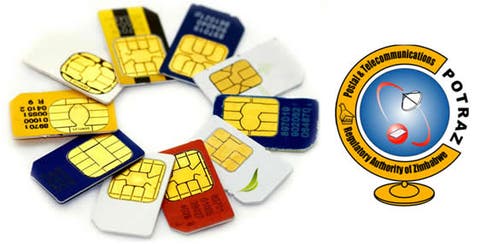I have to tell you, I don’t buy data bundles like I used to. I’ve lost count of the number of times I had to stay up at 3 am just so I could deplete a bundle before it expired. I am accustomed to getting 2G during working hours on my Econet line, so it doesn’t make sense to get a 10GB bundle.
There is no electricity right now in my hood and indeed we are down to 2G (EDGE).
That is my personal experience but DataReportal’s report paints a different picture for the whole nation. We need to talk about this because we found out that only 38.4% (5.7 million) of the population connected to the internet in January 2023.
It’s one thing to connect to the internet, it’s another to get speeds good enough to allow one to actually work. So, let us break it down.
Zimbabwe remains a mobile-first country. Here is how it looks when it comes to share of web traffic by device:
Mobile phones are actually gaining even more ground if you can believe it. They had a share of 54.8% of web traffic a year ago, meaning their share grew by 11.6% from January 2022. So, your website better prioritise mobile over desktop.
It is also important to know which browsers people are using. For the longest time, Opera Mini had a significant share of traffic and its super compression and Javascript limitations meant developers had to optimise their sites accordingly.
It appears Opera Mini is losing ground, here is the share of web traffic by browser in January 2023:
So, those are the devices and browsers Zimbabweans are using. That’s all up to them. Now, what kind of service are they getting from their Internet Service Providers?
I began this article by sharing that I’m on 2G as I type this. You are not getting 10.88Mbps on EDGE and yet every other day that’s what I’m getting. Apparently, ya’ll are enjoying faster speeds on mobile internet than I am getting on fixed internet.
That’s what I’m getting on Liquid Home Fibronix as I type this (9.49Mbps down and 9.53Mbps up)
I can believe the 8.52Mbps speeds for fixed internet. Sometimes we do get speeds approaching 30Mbps but most times it’s around 10Mbps in my experience.
Why is Ookla saying that the median download speed on mobile was 10.88Mbps in January? One factor could be that their data comes from individuals taking their own speed tests. I imagine people taking these speed tests mostly live in neighbourhoods that are prioritised by MNOs.
We have to remember that a speed test is not free. It uses data. The test I ran above ran for about 20 seconds and used around 9.5*20/8=24MB. Downloading 10MB at 10Mbps takes about 8 seconds.
That’s a lot of data to throw around just to see what speeds you are getting. Not many people actually run these tests. Certainly not in neighbourhoods like mine where 2G speeds are the order of the day. This means the data that Ookla and Fast.com collect is not representative of what’s actually on the ground.
While I cannot support this theory of mine, I still think it makes sense. Let me know what you think about it in the comments section below. Are you getting 10.88Mbps on Econet and NetOne’s networks?
We need to acknowledge that some of the speed test screenshots we see on social media showing speeds in the kilobits per second for all networks are most likely run when there are disruptions owing to power cuts etc.
However, even when there are no such disruptions, how often do we complain about an LTE label coming with average 3G speeds? If we got close to peak 3G speeds (42Mbps) we would not be complaining about slow speeds. So, it’s not really about what G we see, we just aren’t getting 10.88Mbps consistently.
What do you think about all this? Let us know in the comments section below.-techzim

